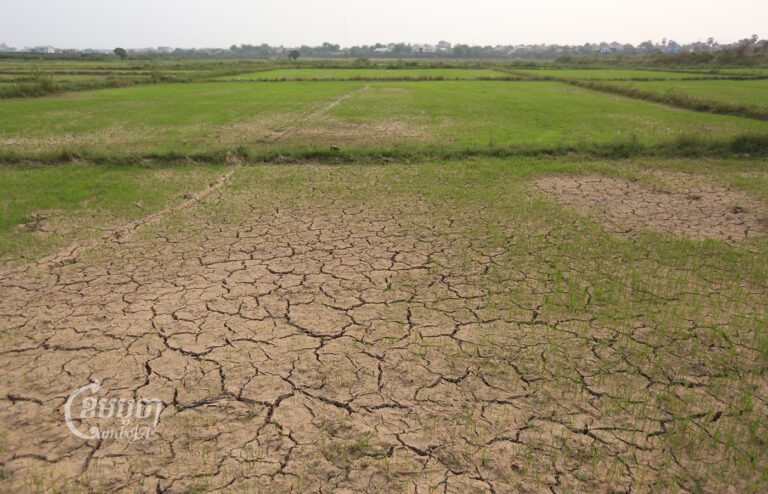A newly released report from the Asia Development Bank (ADB) forecasting growth for the Cambodian economy is providing only cold comfort as its authors acknowledge their study had been conducted before the sweeping lockdown of Phnom Penh and Takhmao.
The ADB report had predicted a 4 percent expansion of the national economy this year. But now, the experts that compiled the document say it will be necessary to wait out the ongoing lockdown, which has effectively put major industries on pause in the nation’s economic hub, before making any accurate estimations.
Heng Sour, a spokesman for the Ministry of Labor, said on Wednesday that 1.2 million workers total in Phnom Penh and the closely linked city of Takhmao have been affected by the lockdown closure of more than 7,000 factories and enterprises. Of those total workers, about 500,000 are employed in the metro’s garment and textile factories, all of which were deemed nonessential workplaces and ordered to close.
The government announced on Monday a one-week extension to the lockdown, which began the night of April 15. Though it’s hard to say what might come next, ADB forecasts even further out also state that growth is due to return — eventually.
In its Asian Development Outlook released Wednesday, the bank predicted Cambodia’s economy will grow by 5.5 percent in 2022 as economic recovery in major trading partners boosts demand for Cambodian merchandise exports and continued foreign direct investment.
But that doesn’t mean everyone will be entirely in the clear, warned ADB country director for Cambodia Sunniya Durrani-Jamal in the report.
“Not all sectors will benefit equally, so it will be essential to closely monitor household welfare and the need for additional support,” Durrani-Jamal wrote. “The uneven pace of the recovery across sectors will continue to put pressure on some households and firms this year, which will slow down the overall recovery.”
“Key risks to the outlook include widening community outbreaks of COVID-19, slower than expected growth for Cambodia’s major trading partners such as the US and EU, continued weakness in domestic demand, and stress on financial services and banking,” she added. “The government needs to maintain its accommodative fiscal policy stance this year and next to support growth.”
ADB noted that by October 2020, the Cambodian government had disbursed monthly cash payments to more than 660,000 households. However, the survey shows 2020 also saw large and widespread drops in household income, forcing families to use various methods to cope, such as spending savings, selling assets and reducing spending.
The ADB said these short-term survival measures could have long-standing effects.
“These strategies have already depressed household consumption and could have a long-term impact on welfare and productivity if this continues well into 2021,” the report stated.

On Monday evening, the government announced it was extending to May 5 the lockdowns in Phnom Penh and Takhmao city in Kandal province in order to stop the spread of COVID-19. In the updated lockdown announcement, the government extended previously listed red zones and added new ones, effective to the end of the extended lockdown.
The red zones now include three villages in Boeng Salang commune; one village in Prey Sar commune; three villages in Dangkor commune; Stung Meanchey 1, 2, and 3 communes; Boeng Toumpun I commune; Tuol Sangke I commune; and Choam Chao 1 commune.
Hiroshi Suzuki, chief economist at the Business Research Institute for Cambodia (BRIC), said the lockdown could have a negative impact on the 2021 growth rate but also pointed to global factors outside of Cambodia’s contro.
“The negative impact of the pandemic is very severe on tourism and exports,” he said. “Only with the recovery of the world economy can the recovery of these industries be expected.”
Suzuki said the cash provided to vulnerable and poor families is a good measure to mitigate the impact of pandemic, adding that assistance to small and medium-sized enterprises is also necessary not only to curb the worst blows but also to stimulate the economy and to start the recovery.
Earlier this year, the World Bank forecasted Cambodian economic growth of 4 percent. Meanwhile, the IMF predicted a 4.2 percent increase.
Meas Soksensan, a spokesman at the Ministry of Economy and Finance, said that in this disruptive period for production and exports, the government has yet to revise its previous projection of 4 percent growth in 2021. He said the prime minister will introduce a new economic recovery plan to meet the current circumstances.
“We are actively and busy working on this. Please wait for the decision of Samdech Techo,” Soksensan said.
ADB had predicted industrial production would experience strong growth, expanding by 7.1 percent in 2021 and 7.0 percent in 2022 on the back of the garments, footwear and travel goods sector, as well as growth in light manufacturing.
In the report released Wednesday, ADB had expected agriculture to pick up, growing by 1.3 percent in 2021 and 1.2 percent in 2022, underpinned by higher crop production and rising agriculture exports to China.
However, even before the lockdowns, ADB economists believed the services output would recover more slowly, notching growth of 3.3 percent in 2021 and 6.2 percent in 2022 as travel restrictions eased. Real estate was expected to recover steadily from last year’s contraction, in line with a similar trend for the construction industry.
Chan Sophal, director of the Centre for Policy Studies (CPS) said it’s obvious to all that the pandemic is having a serious impact on the economy.
He said tourism services that rely on international tourists have been dead for a year and are not likely to return by the end of this year. Workers who were laid off have moved on to other jobs already, Sophal said.
“I think the hit on the garment industry is a big concern now. But this could get back quickly if well managed,” he said.
Sophal said that, to aid the post-COVID economic recovery, the business environment and trade facilitations should be improved more quickly and thoroughly than they have been before.
“I think the government knows what to do, it is a matter of being more decisive in sorting out the problems,” he said. “Perhaps the government could use the lessons learned in the fight against COVID for being more urgent in undertaking reforms.”












